TABLE OF CONTENTS
Nonstick coating isn't synonymous with Teflon anymore, and most high-quality nonstick cookware sets are made with higher quality materials, eliminating the concern of toxic flakes.
If you are in the market for a new nonstick cookware set, you may have some pertinent questions before making your pick. And the good news is, if you're reading this, you're already doing your due diligence to identify the best option for you!
What is nonstick cookware made of?
Nonstick cookware is typically made of materials such as ceramic, Teflon, or stainless steel. Ceramic is considered to be the safest material as it does not react with food acids, while Teflon can react with food acids to some extent.
Stainless steel can also cause reactions, but to a lesser extent compared to Teflon. Some nonstick cookware may also have a durable mineral and diamond surface for enhanced performance.
Teflon became used widely for other purposes first, as a lining for pipes and more. Eventually, it was picked up for use for cooking pans, beginning with French Engineer Mark Gregoire. He used the material for detangling fishing lines, and his wife noticed just how slick it was. So, he chose to apply it to their cooking pans and quickly noticed the difference: Food didn't stick, even with significantly less oil. Thus began the use of Teflon on pans under the brand Tefal.
When we cook, we use oil on metal pans because the oil fills the fissures in the metal to prevent food from entering them, which reduces sticking. Nonstick pans, however, have been coated with PTFE, which then fills in the pan's pores and creates a smooth, nonstick surface for cooking. The result is food that comes right off the surface when cooked.

Is nonstick cookware safe to use?
Nonstick cookware can be safe to use when used properly and according to manufacturer's instructions. It is important to consider the material of nonstick cookware, with ceramic being considered the safest, as it does not react with food acids, while Teflon and stainless steel can cause reactions to some extent.
Can nonstick cookware be used in the oven?
It appears that nonstick cookware can generally be used in the oven, but there are some considerations to keep in mind. Most nonstick ceramic pans made after 2013 are PFOA-free, which is the compound of concern when it comes to toxins associated with Teflon, making them safe for oven use.
Avoiding using nonstick pans in the oven if you want to extend the lifespan of the nonstick coating, as high temperatures in the oven may affect the longevity of the coating. Cast-iron pans are often suggested as a better option for oven use, as they can go in and out of the oven with no worries and do not have nonstick coatings that can be affected by high temperatures.
However, it is important to note that the oven-safe temperature and usage instructions may vary for different nonstick cookware brands and models, so it is recommended to check the specific product's instructions and guidelines for safe oven use.
How to properly care for nonstick cookware?
To maintain the safety of nonstick cookware, it is recommended to use medium heat or lower, avoid overheating, and not to preheat an empty pan.
Proper cleaning and avoiding chipping or scratching of the nonstick surface also contribute to safe use.
It's also important to note that not all nonstick cookware is compatible with induction ranges, as aluminum-based pots and pans are not magnetic. Overall, with proper care and use, nonstick cookware can be safe for cooking various types of food.
How long does nonstick coating last on cookware?
The lifespan of nonstick coating on cookware can vary depending on factors such as the type of coating, usage, and care. With proper care and usage, nonstick cookware can provide several years of effective use.
Generally, non-stick pans coated with PTFE (Teflon) last at least three years, while ceramic-coated non-stick pans have an average lifespan of two years. Pans with multi-layer PTFE coating or reinforced non-stick coating tend to last longer.
Benefits of Nonstick Cookware
Nonstick cookware has many benefits that help it stand out in the kitchen. From health benefits to affordability and ease of use, nonstick cookware is often a fan-favorite for novice cooks still learning their way around the kitchen.
Require Less Oil
Because the nonstick coating already fills in the nooks and crannies of the natural metal used to create the pan, there is less need for oil or butter when cooking. As you use less fat in your cooking in butter or oil, the result is a lower-calorie meal.
Fat is an important part of any diet, but when consumed in excess, it is unhealthy. When you have to cook healthy foods in excess oil to prevent them from burning or sticking to the pan, you reduce the healthiness of that food. This is perhaps the most significant of the benefits expected from these pans. If you or someone in your family is on a low-fat diet, a nonstick pan is likely one of the most important tools in your kitchen.
Easy to Maintain and Clean
Since nonstick cookware prevents food from sticking, washing it is much easier than scrubbing off the food from the surface. Washing is best done with a soft sponge that won't scrape the surface and hot, soapy water for the interior and exterior. Alternatively, many nonstick pans are also dishwasher-safe for even easier cleaning.
Doesn't React to Acids
Some foods, especially acidic ones, can react to the pans you use. Copper, iron, and aluminum pans can be reactive with acidic foods. As a result, cooking with acids can cause it to take on a metallic flavor. Nonstick pans, however, are not reactive. They will resist wines, tomatoes, lemons, and any other acids you may choose to cook with.
Great Cooking Tool
Because so many common foods tend to stick to pans when cooked at lower temperatures, like eggs and pancakes, having a nonstick pan on hand for these purposes is a great idea. Even if you choose to cook in stainless steel, cast iron, or any other type of pan, having a nonstick pan on hand is useful for any cook.
No Preheating Necessary
Nonstick cookware does not require preheating in the way cast iron or stainless steel does before adding the food to the pan. This can shorten the cooking time dramatically, as you are not stuck waiting for the preheating process to finish.
Affordable
Nonstick cookware tends to be much more affordable than many other options. Stainless steel and cast iron tend to be significantly more expensive than similar-quality nonstick cookware.
Durable
Quality is not compromised with affordability in good nonstick cookware. By choosing a high-quality brand, you will get enhanced performance and durability, as long as you take care of your nonstick cookware according to the instructions. This means refraining from using scrubbing sponges or metal utensils on its surface.
Easy to Use
Last, but not least, nonstick pans are incredibly easy to use. They are perfect for fried or breaded items that would otherwise break in the pan. They are also ideal for less-experienced cooks because the food will not stick to them if cared for properly.
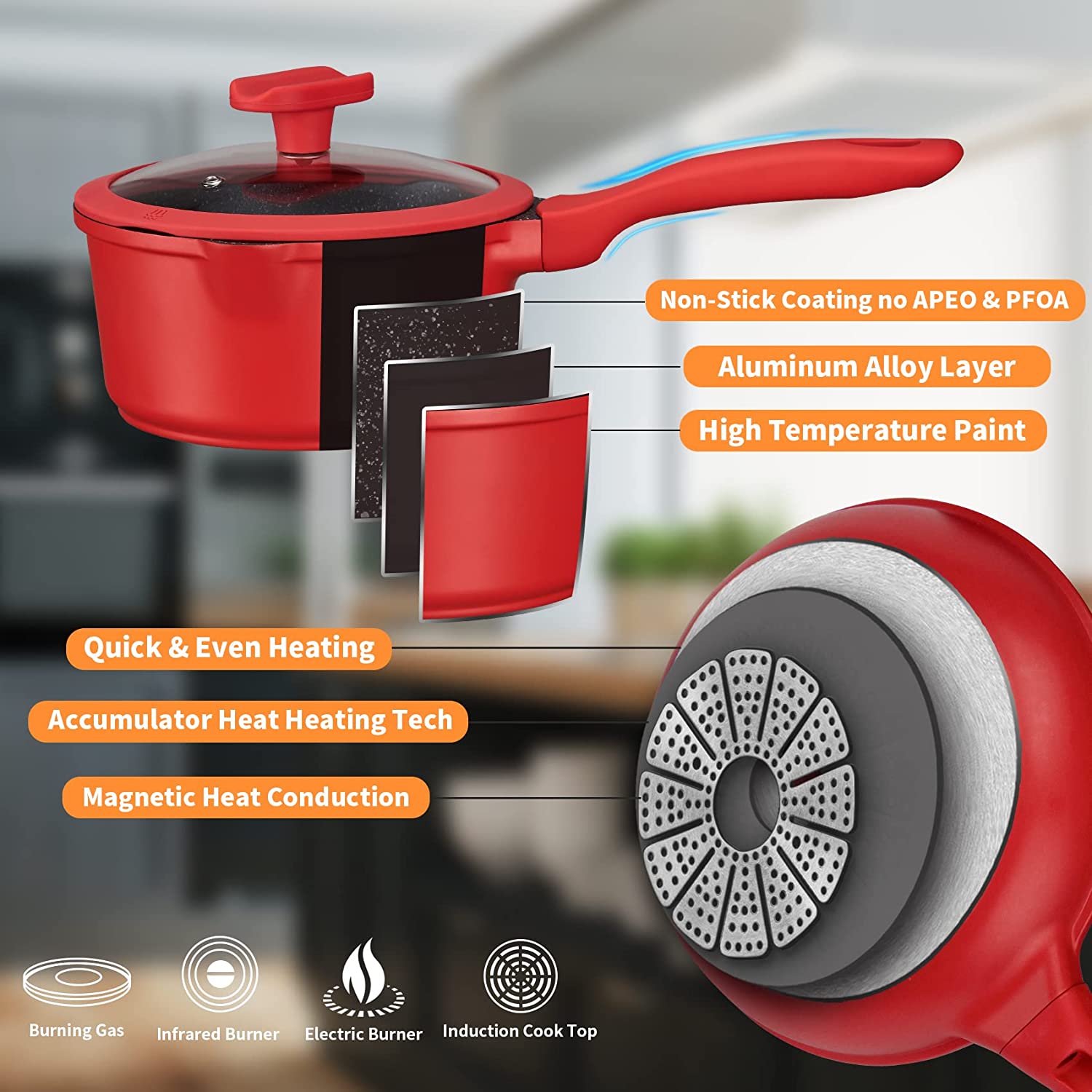
How to choose the right nonstick cookware set?
There are many different types and brands of nonstick cookware, so knowing what to look for is crucial before you go out and pick one.
Material
Nonstick pans can use many different base materials. However, different base materials will change how pans heat, cook, conduct, and maintain heat. The most popular option is aluminum, which response well and can be used on any cooktop.
Stainless steel is popular due to its heaviness. They are built more substantially and are less susceptible to dents.
Copper is commonly used for extreme responsiveness to changes in heat, meaning you can go from high heats to low heats and have the pan respond accordingly.
Then, you need to consider what is used to coat the pan on the inside, which is likely either ceramic, hard-anodized aluminum or PTFE. The best choice is the one that meets your needs.
Weight and Size
The size and weight of a cookware set will also change the user experience. Most people do best with a mid-weight cookware set. Lightweight ones typically are flimsier and heat up quickly, and heavier cookware allows for a good sear but may be harder to lift for those with limited mobility.
Number of Pieces
Different people will need different cookware set sizes. A large family may need a set with more pieces than a single person. Most likely, you will use a large nonstick skillet more often than anything else. Likewise, you will probably need a large saucepan for cooking rice, stews, and soups. Choose a set that's large enough to meet your family's needs.
Heating Capacity
Nonstick cookware is usually best for low and medium temperatures. Keep in mind that PTFE coatings are typically approved for use to 400 degrees Fahrenheit. Hard-anodized cookware can heat up to 400-500 degrees Fahrenheit. If you are the type to sear on the stove, then cook in the oven, make sure that the pan you've chosen will withstand those temperatures.
Cooktop Compatibility
Not all pans will work for all types of cooktops. Make sure to check the manufacturer's instructions to ensure that your choice will work on your stovetop. Induction stovetops often do not work well with aluminum cookware.
Dishwasher Compatibility
If you are on the go, you may want to ensure that your cookware is dishwasher safe. This will save you both time and energy. However, confirm with manufacturer instructions to be sure that the pan will withstand the dishwasher.
Price
Nonstick cookware is often available at a wide range of prices. The least expensive is lightweight aluminum pans coated with either Teflon or ceramic. Medium or heavyweight pans will often be more costly due to needing more material. Remember that whatever you buy will eventually need to be replaced; nonstick cookware typically wears out quicker than other options.
Warranty
When selecting your nonstick cookware, consider the manufacturer warranty. Often, they offer coverage for defects in material or construction but do not cover damage caused by improper use.
Included Accessories
Sometimes, cookware sets come bundled with nonstick-compatible utensils and items. You may not need these, but they are worth considering during your shopping.
Handle Type
Finally, consider the handle how your cookware feels when cooking is important. Choose the one that feels best in your hand.

Different Types of Nonstick Cookware
Nonstick cookware describes any kind of treated cookware that can help prevent sticking to the pan.
Traditional Nonstick (Teflon)
Teflon-coated pans are the traditional nonstick cookware. These pans clean easily and are effective, but do wear out over time. Typically, they require at least three coatings to be effective.
Ceramic
Ceramic cookware is coated in material derived from silica, which is sprayed or dipped to coat the inside of the pan. Then, the silica is cured in an oven. Ceramic nonstick pans can use just one coating. However, ceramic tends to be more brittle than nonstick coatings. It will lose nonstick properties quicker than Teflon in most common use scenarios.
Carbon Steel
Carbon steel is not naturally nonstick but can be seasoned to be. The seasoning process can be time-consuming, but once completed, it works well. These pans can also get hotter than Teflon or ceramic, making them perfect for searing and charring.
Cast Iron
Cast iron, like carbon steel, requires seasoning to be built up over time while cooking. It is often heavier and not quite as nonstick as carbon steel, but it is durable and will last decades when well-maintained.
Hard-Anodized Aluminum
Hard-anodized aluminum bakes in the nonstick surface by electrochemically hardening aluminum to force it to oxidize on the top layer. This is tougher than a traditional nonstick coating while still offering similar benefits. These pans can withstand high temperatures, don't scratch, react to acidic foods, and are not prone to chipping as the nonstick surface is part of the pan itself.
The best brands for nonstick cookware sets
At this point, you may be wondering which cookware set is best for you. Here are the popular and best brands for nonstick cookware sets.
All-Clad: All-Clad is known for its high-quality cookware and offers a wide range of options for serious cooks. It features heavy-gauge, hard-anodized construction with a PFOA-free nonstick coating that offers even heating and superior performance and it comes with a variety of pots and pans to suit different cooking needs. The 10-piece nonstick cookware set costs $499.99.
GreenPan: GreenPan is a Dutch company that offers true ceramic nonstick cookware sets and pans. They are known for their advanced coatings that provide performance, durability, and resilience. They have the Venice Pro Ceramic Nonstick 10-Piece Cookware Set, which features glass lids and is considered flawless-looking. The price ranges from $579.99 to $714.99.
T-fal: T-fal Ultimate Hard Anodized Nonstick Cookware Set: This cookware set is highly rated and comes in various sizes, including 8-inch, 10.25-inch, and 12-inch frying pans.
It features hard-anodized aluminum that retains heat perfectly and has a durable protective layer, making it scratch-resistant and corrosion-resistant. The set includes multiple pieces such as fry pans, saucepans, Dutch ovens, and griddles, making it versatile for different cooking needs.
Made In Cookware: It offers a wide range of nonstick cookware sets, including frying pans, saucepans, Dutch ovens, and more, with different sizes and configurations to suit different cooking needs.
The sets are made from high-quality materials and are designed to deliver exceptional performance and durability. The starting price for 5-piece nonstick cookware set is $559.
Imarku: Best overall set.
Imarku
imarku 16-Piece Nonstick Cookware Set

For a larger family, this 16-piece cookware set is a great option. It includes a 9.5" frying pan, an 11" frying pan, a 2.07 qt pot and glass lid, a 5.54 qt pot and glass lid, an 11" square frying pan, an 11" high frying pan with a glass lid, three silicone cooking utensils, two insulation pads, and two insulation gloves. They are safe to use on ceramic, gas, electric, and induction stoves.
In particular, this cookware set offers a thickened base for even cooking. The cookware is scratch-resistant, and the handles are covered with soft rubber to keep your hands safe.
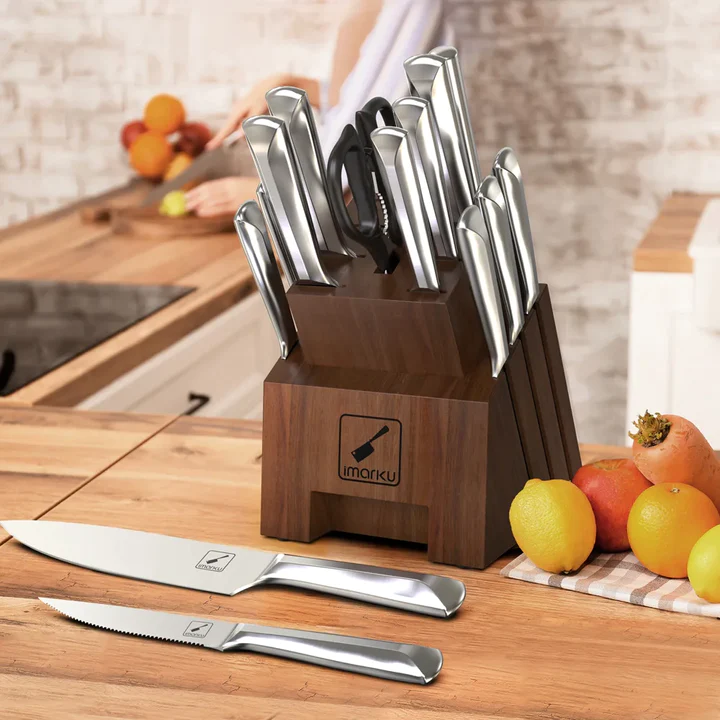
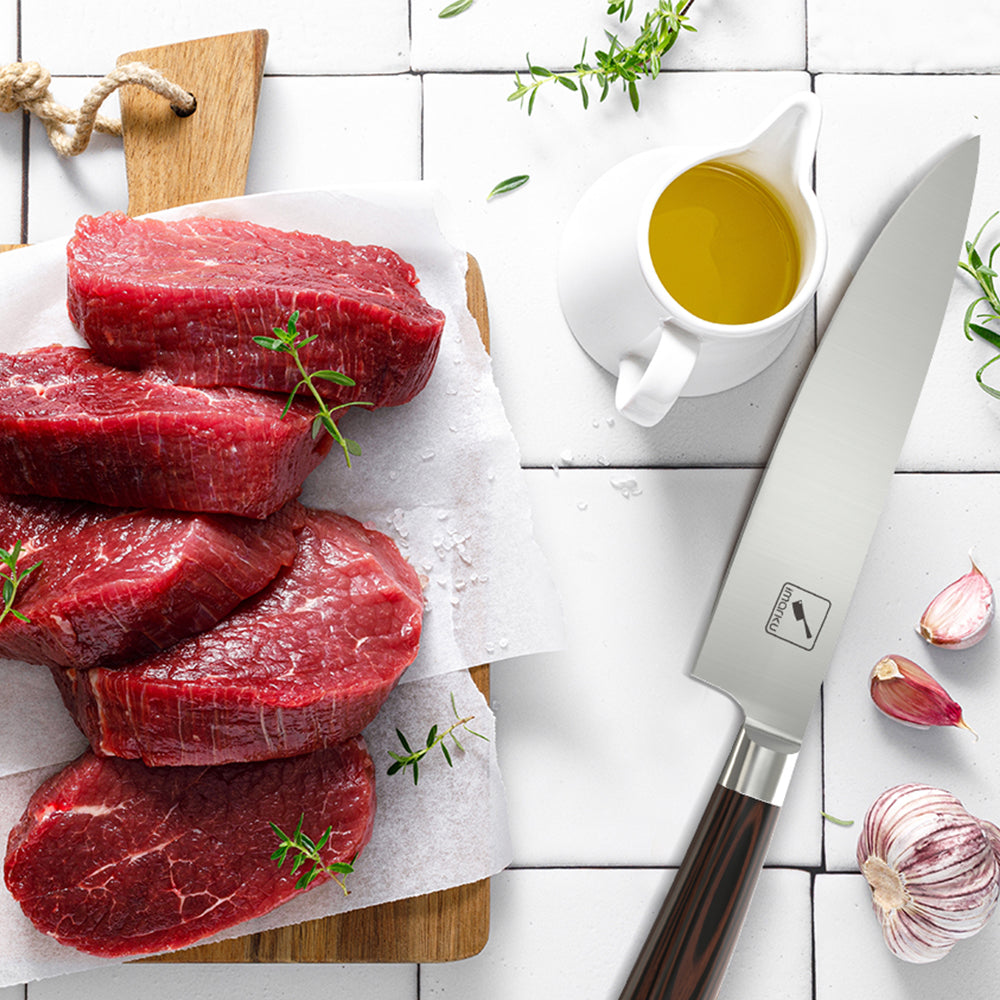
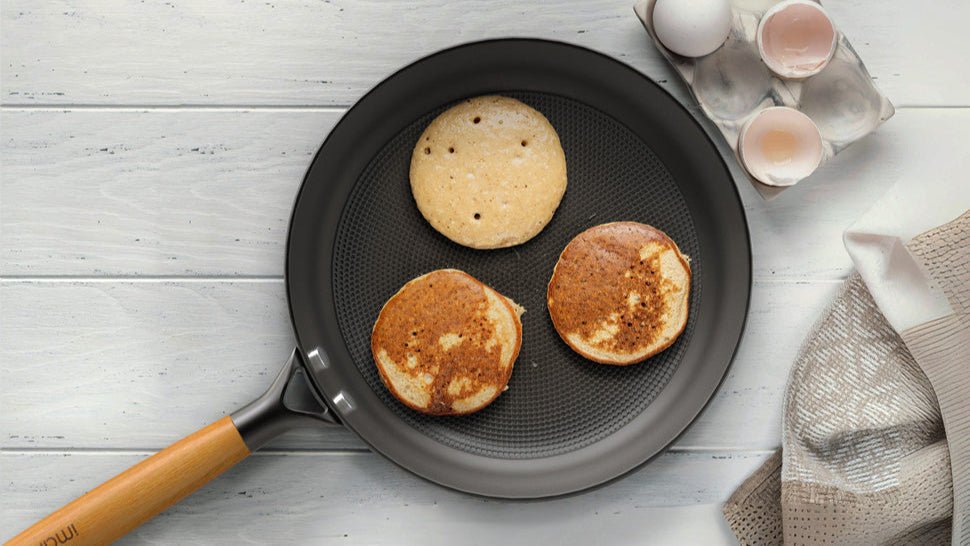
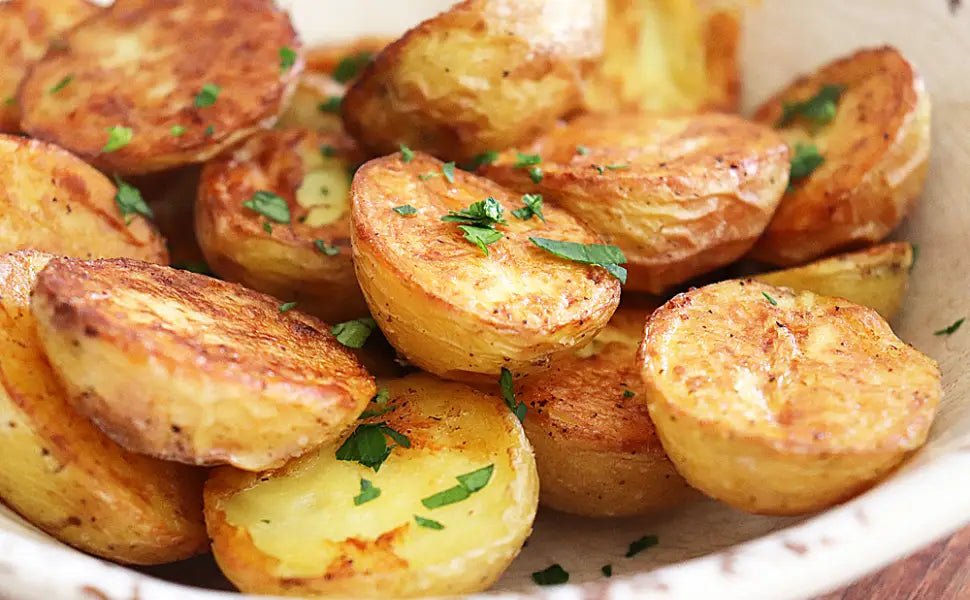


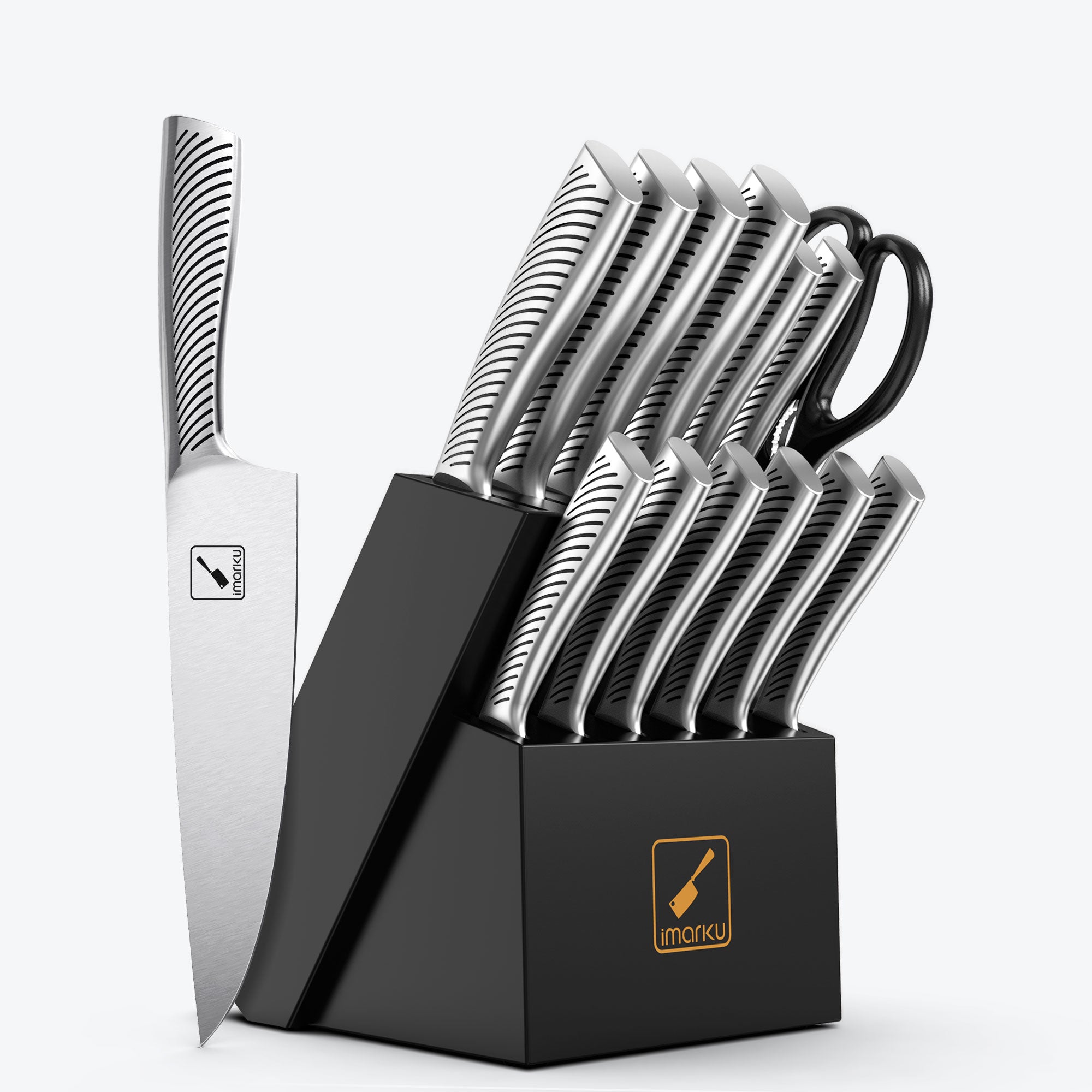

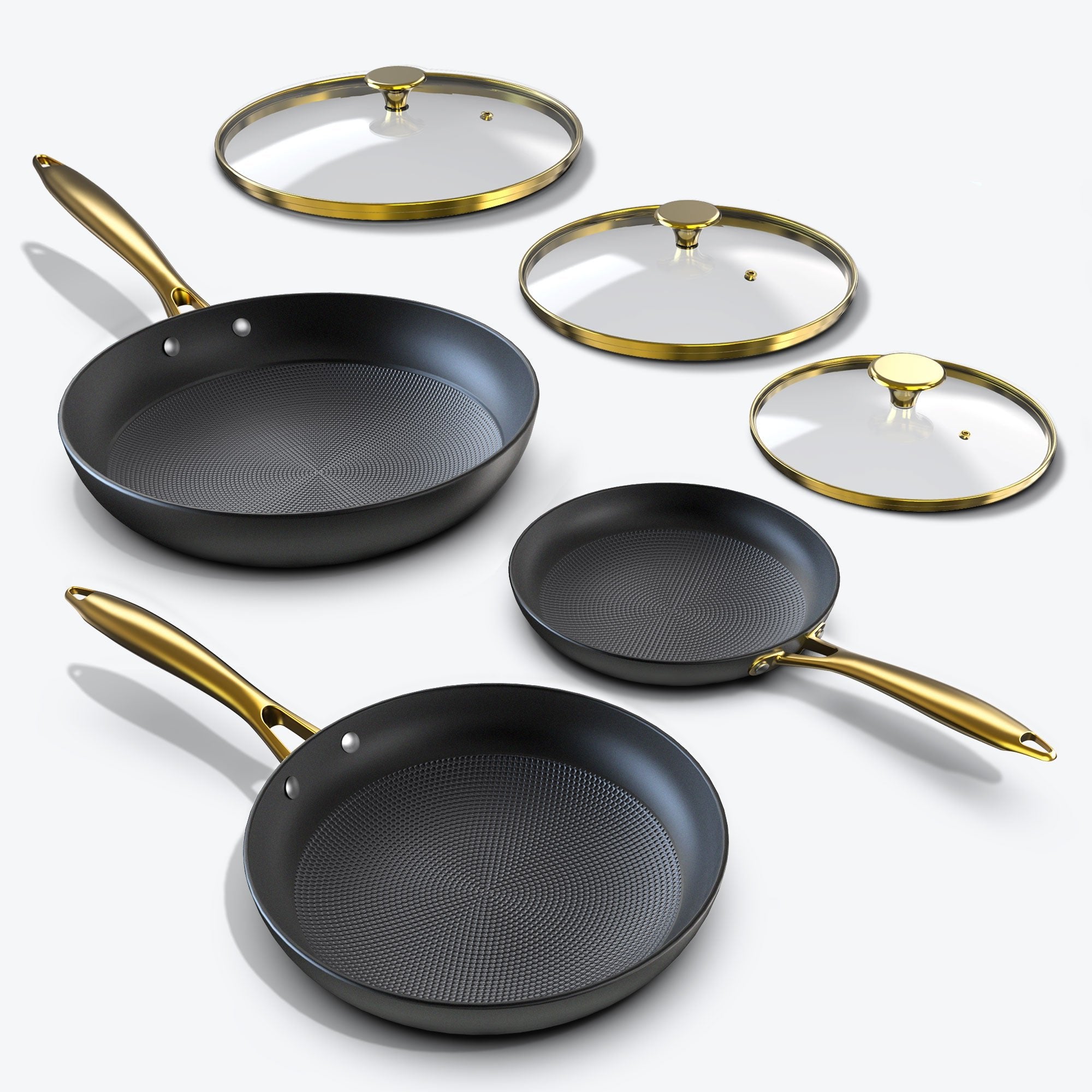
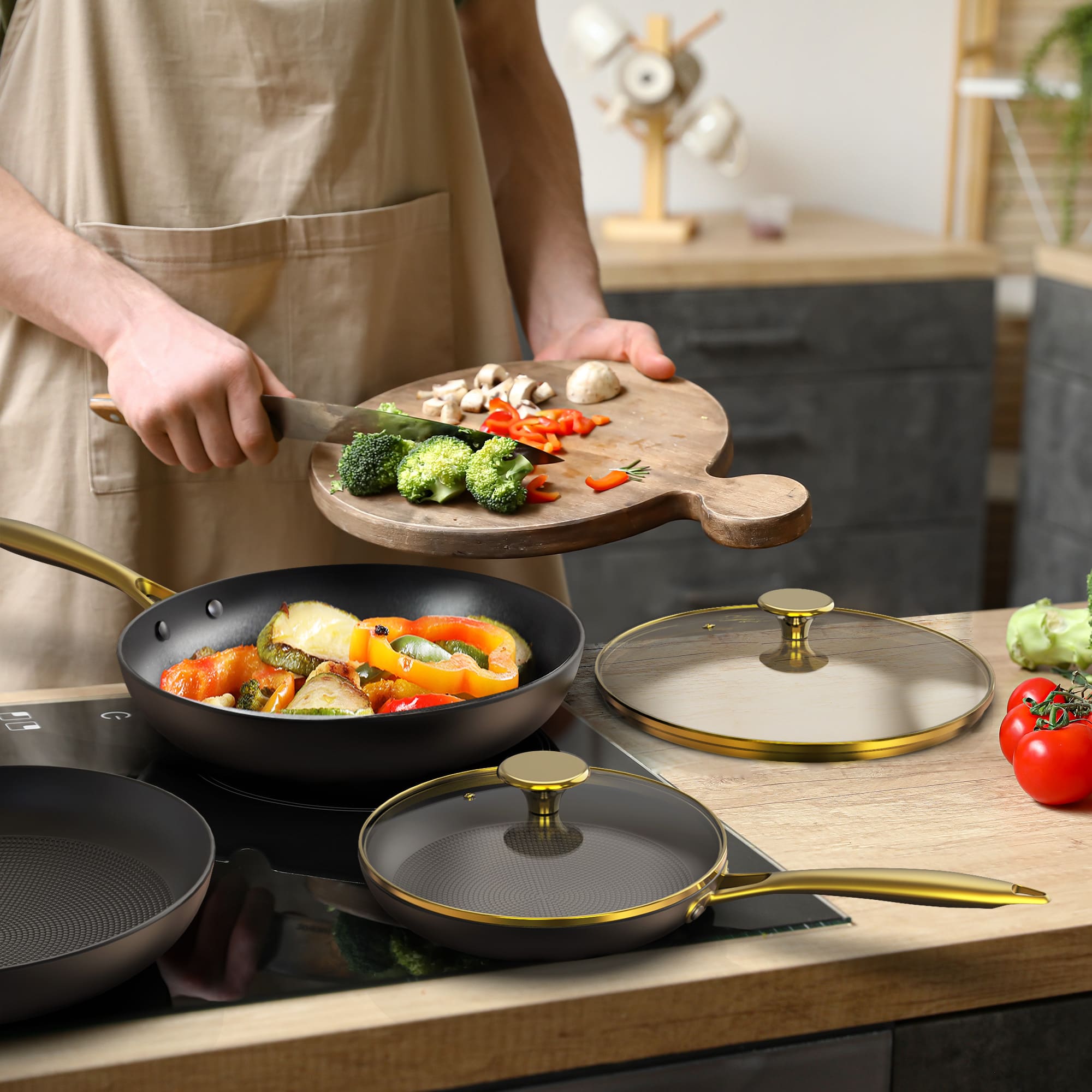
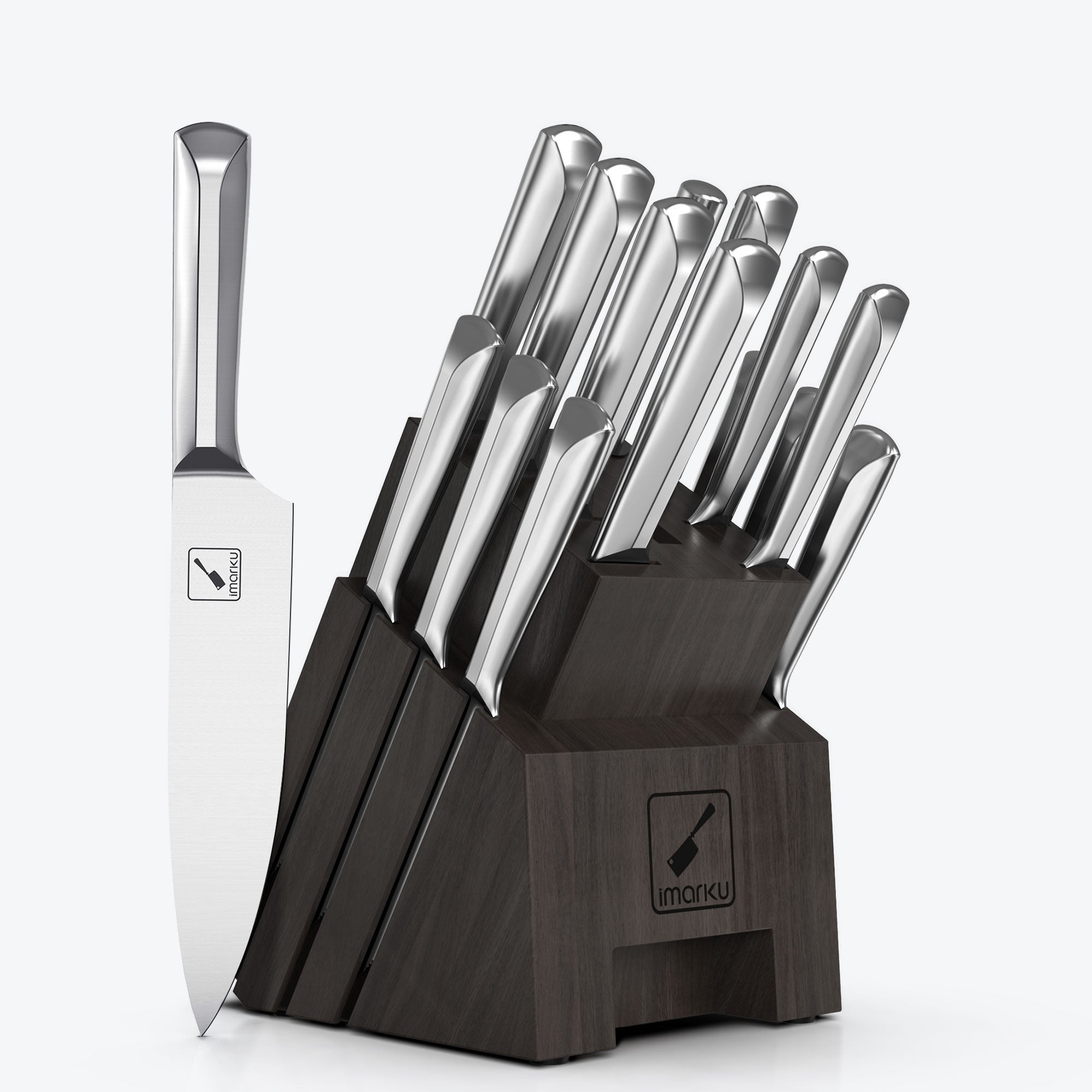

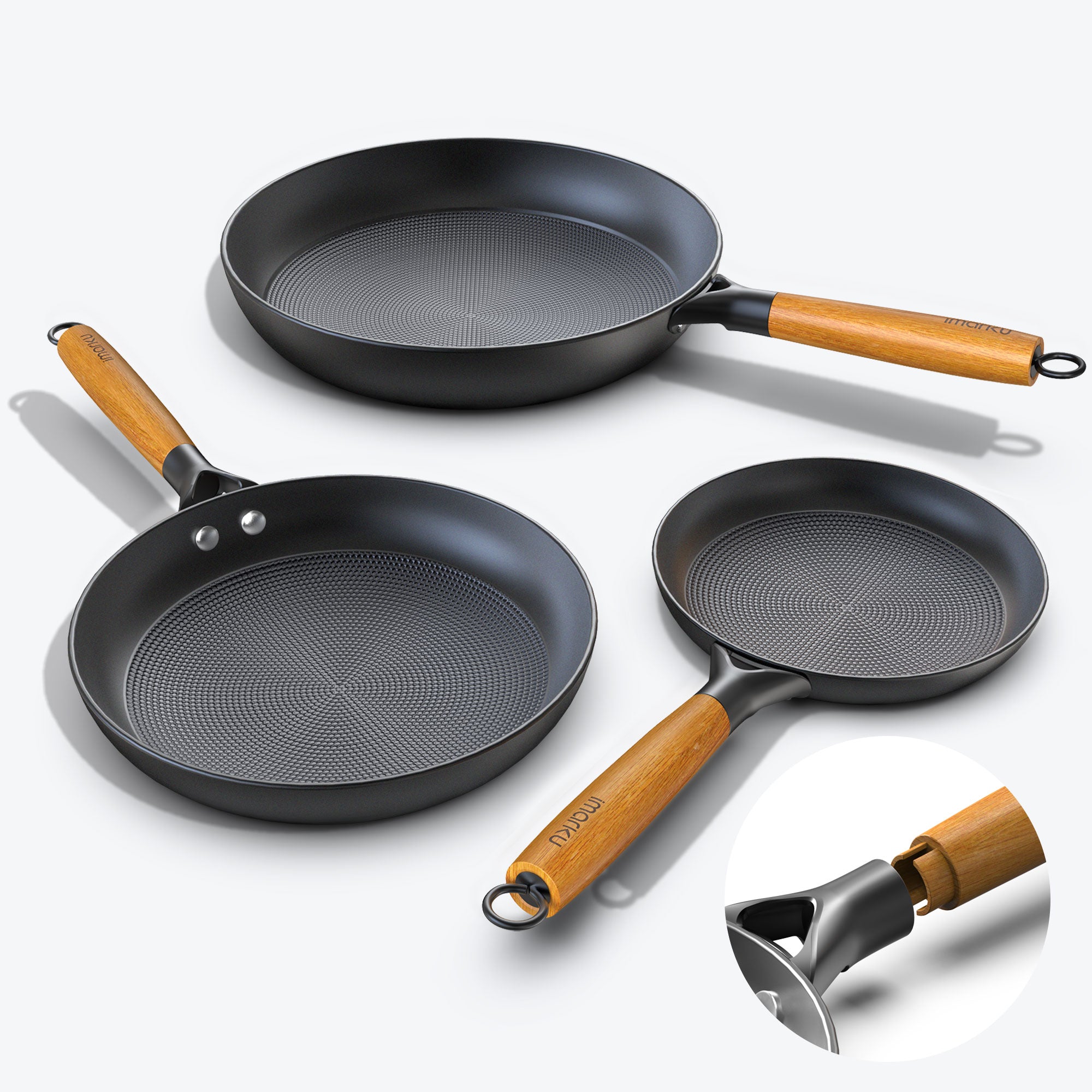
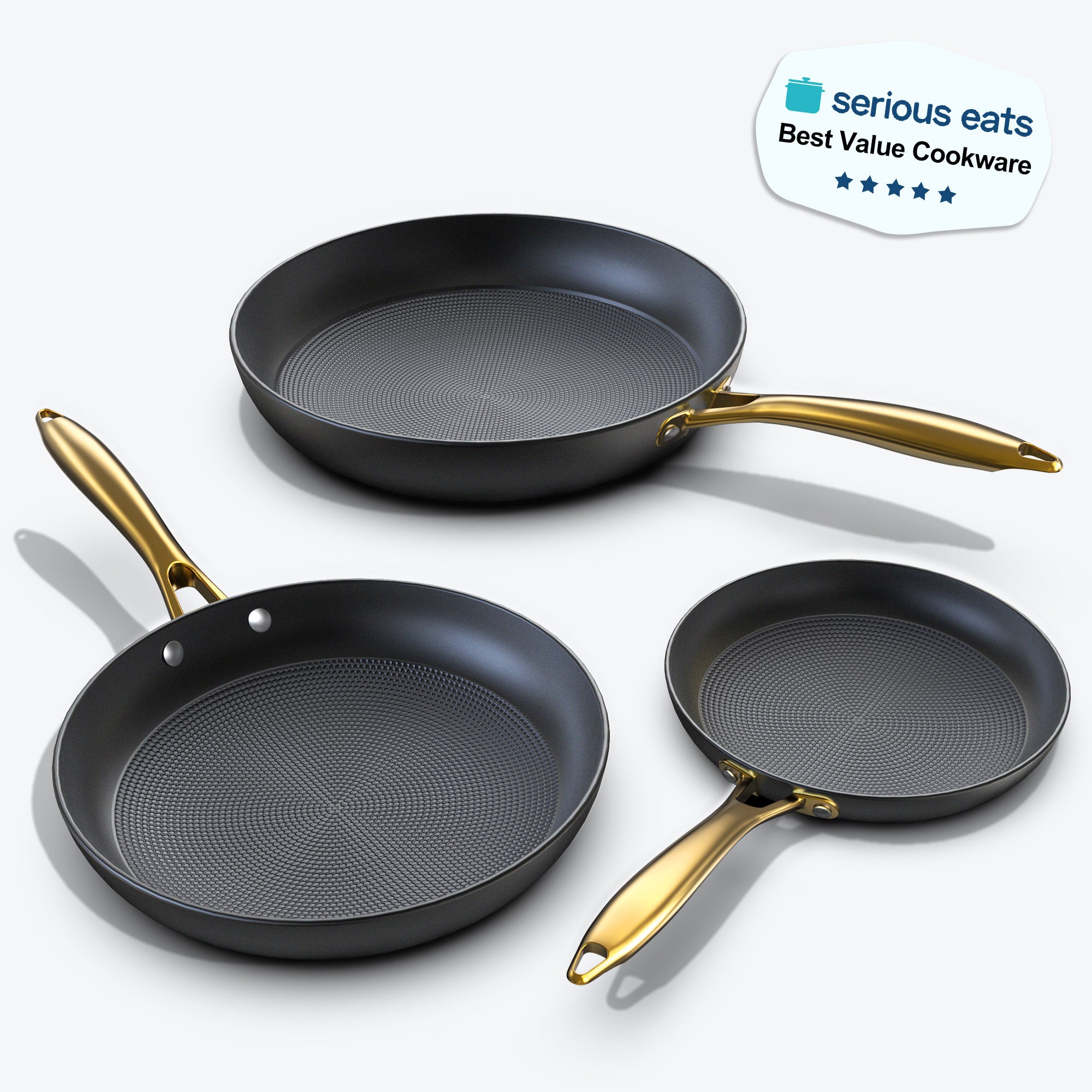
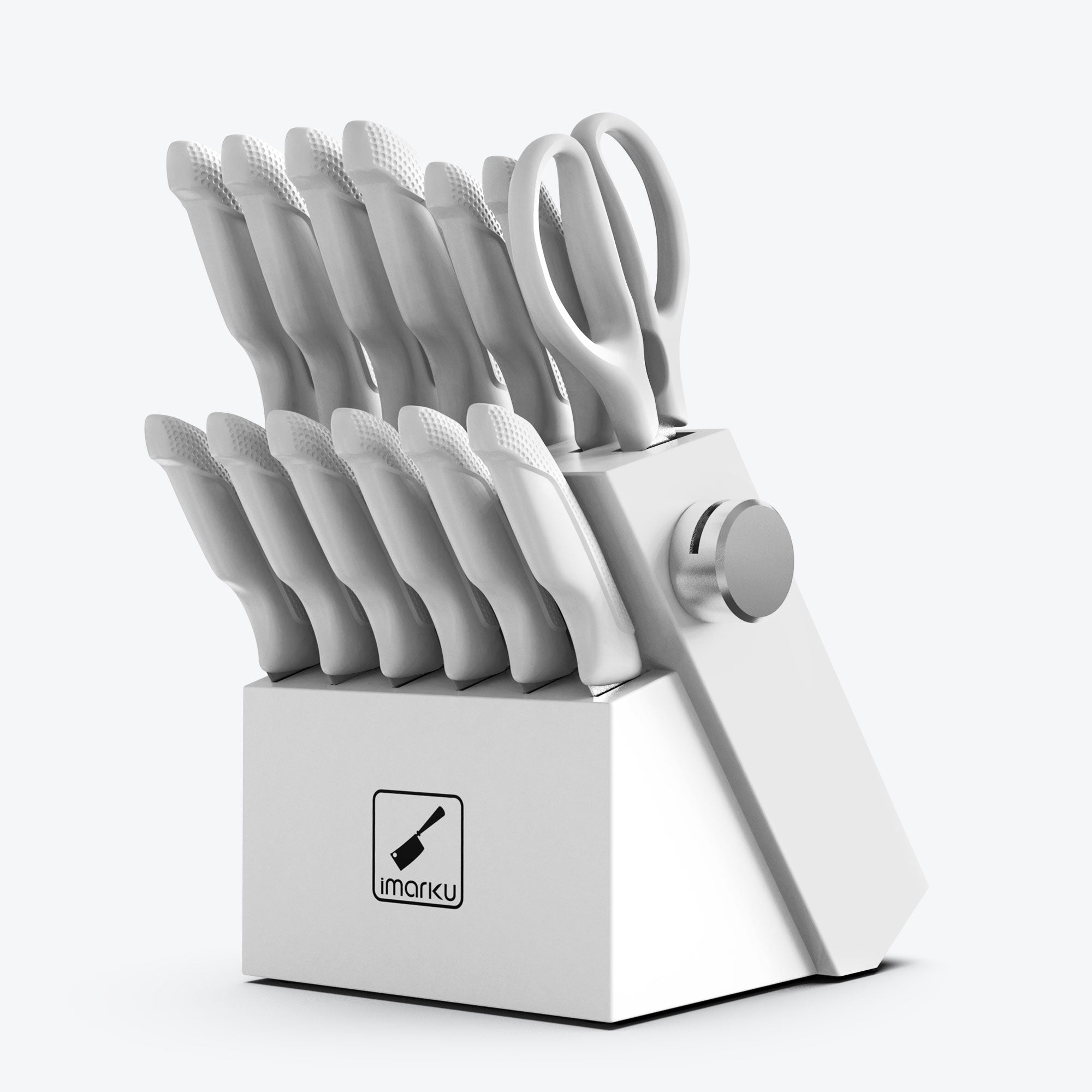
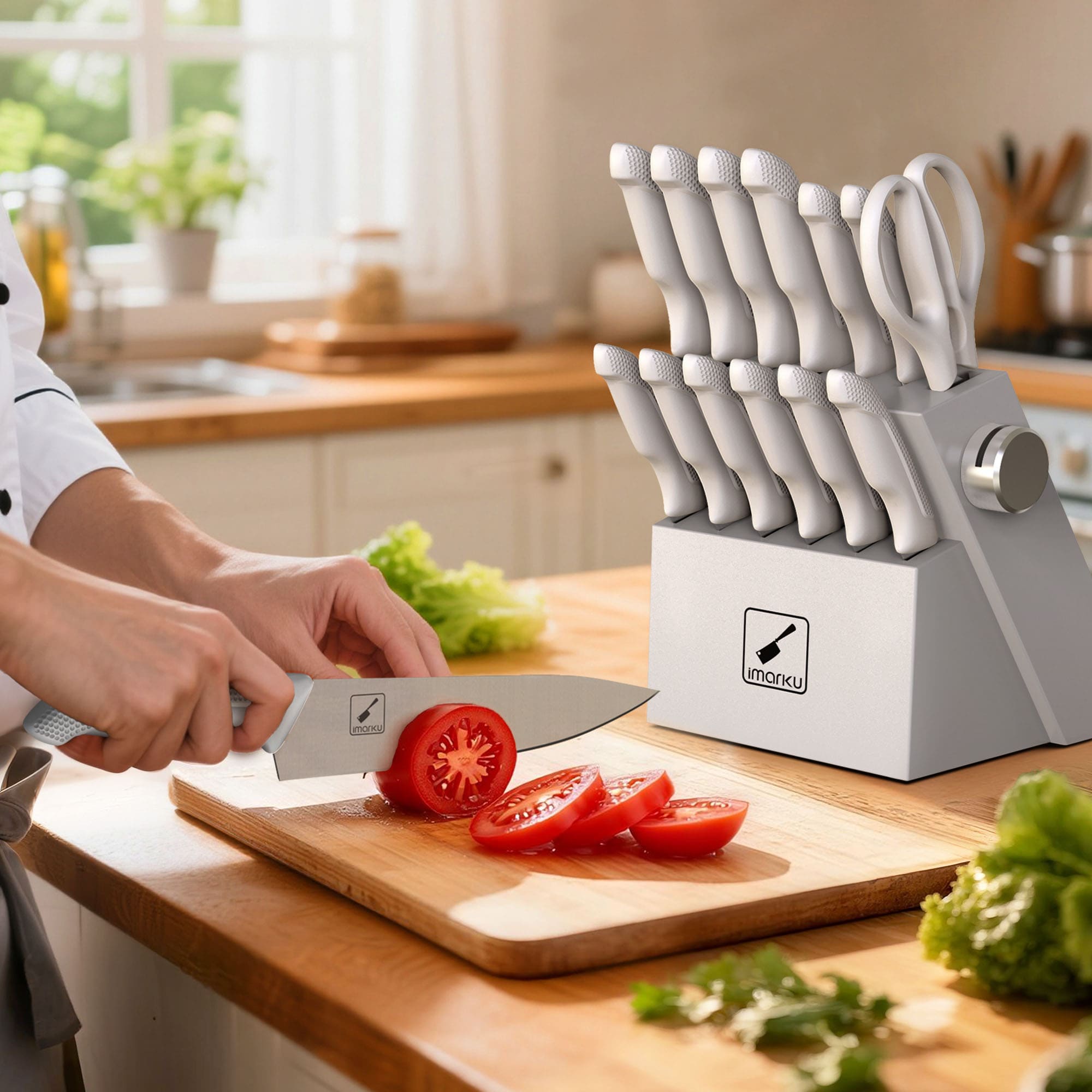
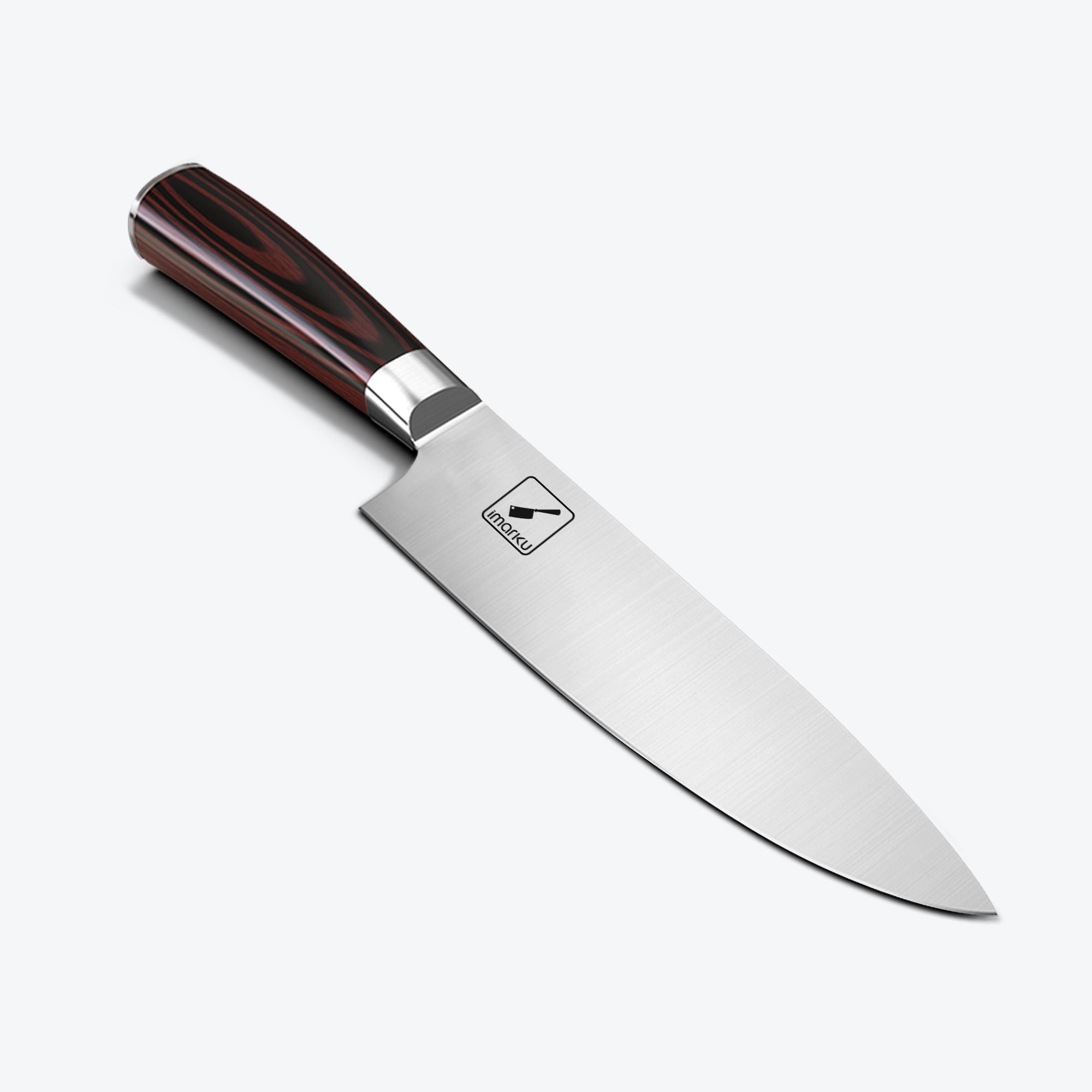

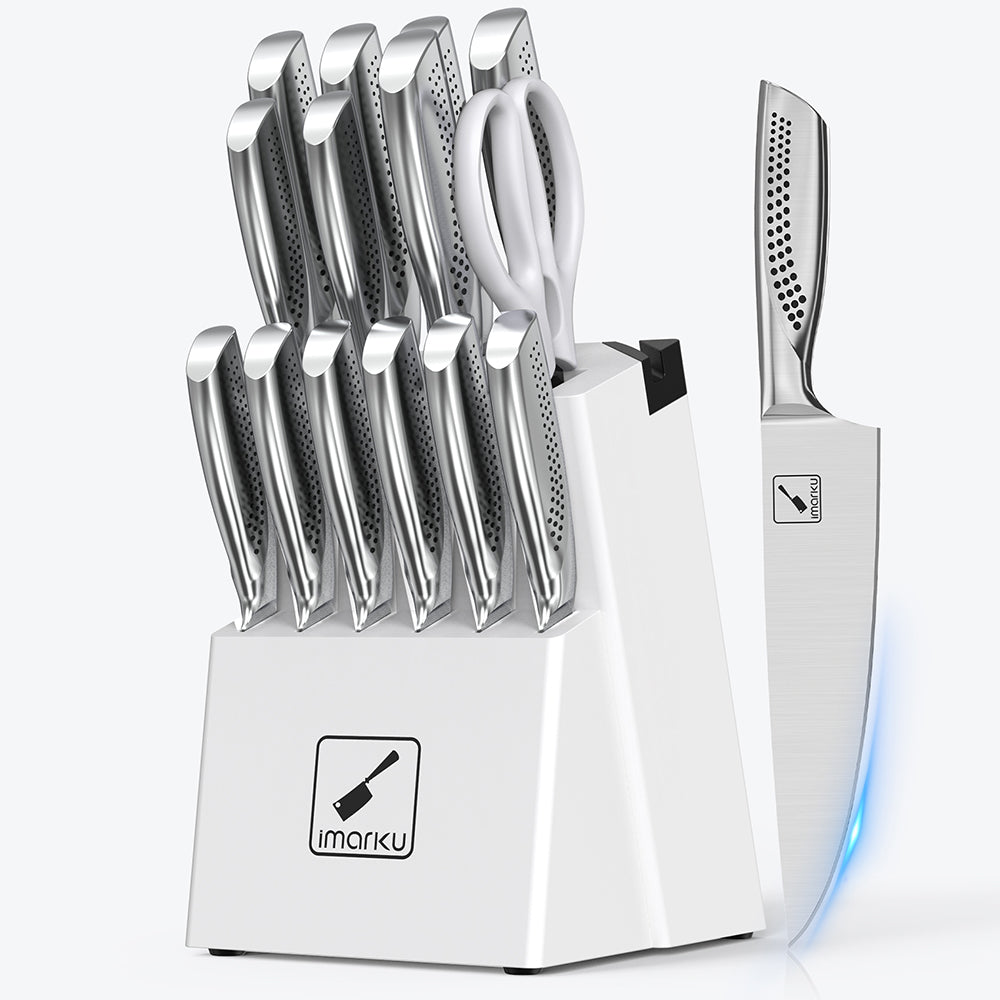

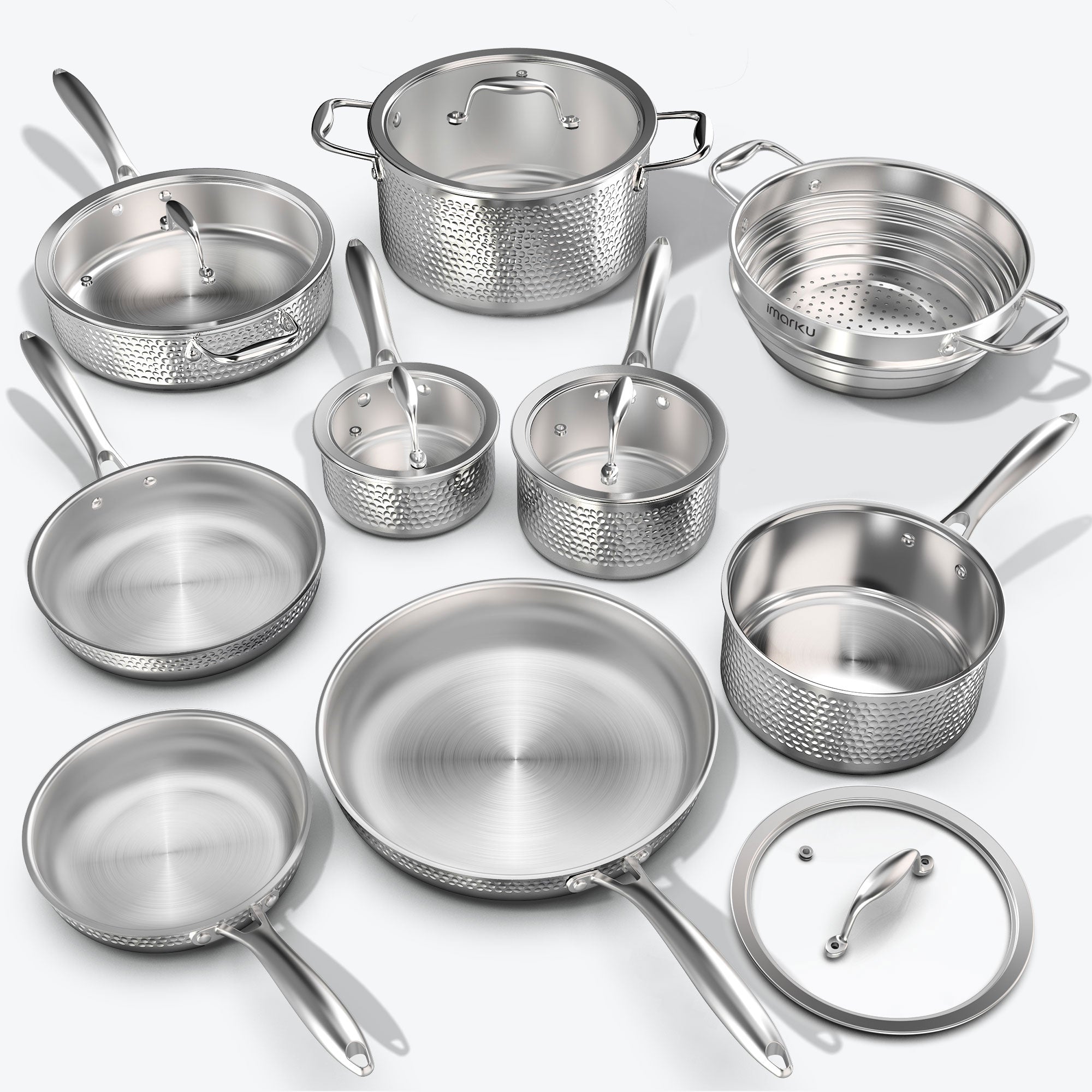
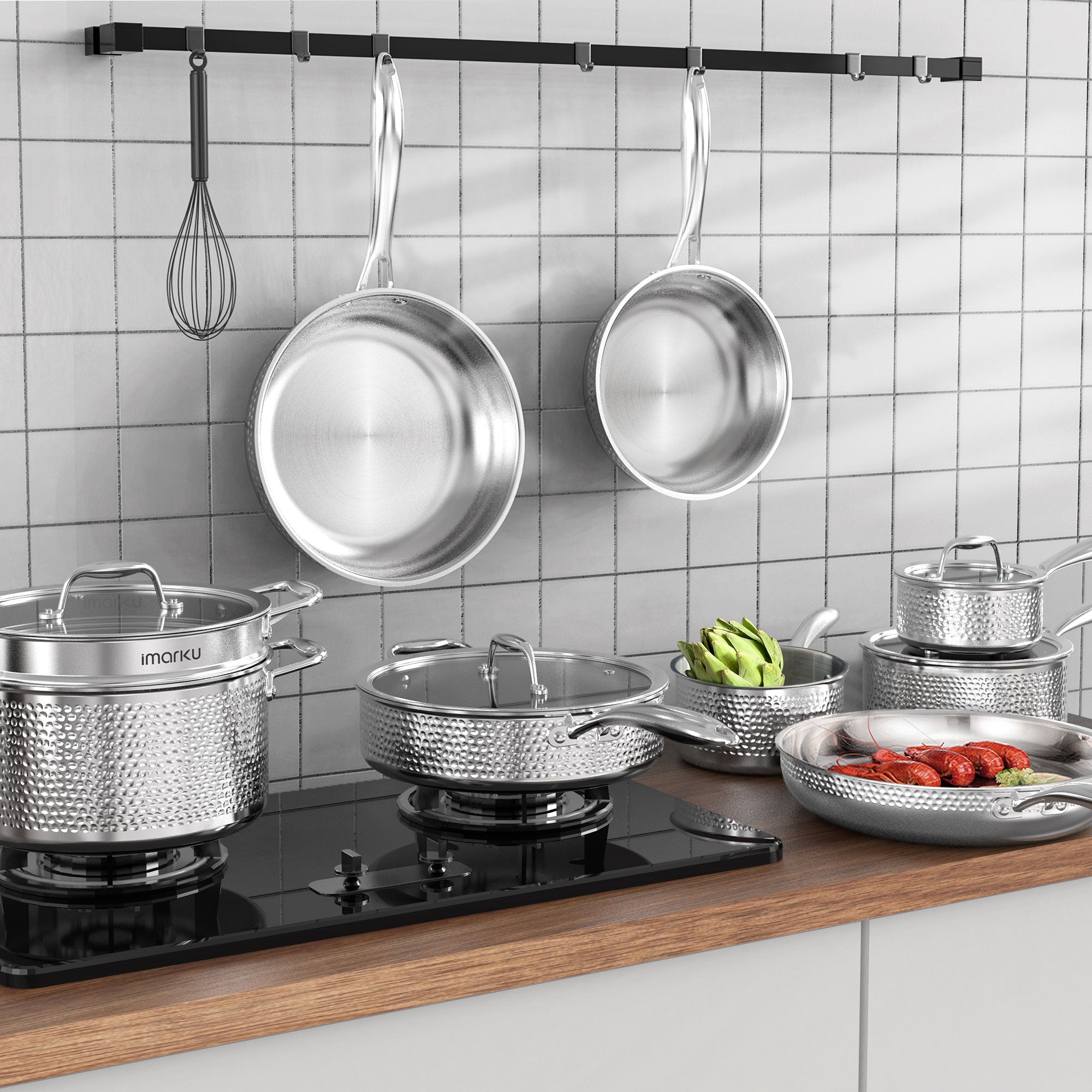
Leave a comment
All comments are moderated before being published.
This site is protected by hCaptcha and the hCaptcha Privacy Policy and Terms of Service apply.